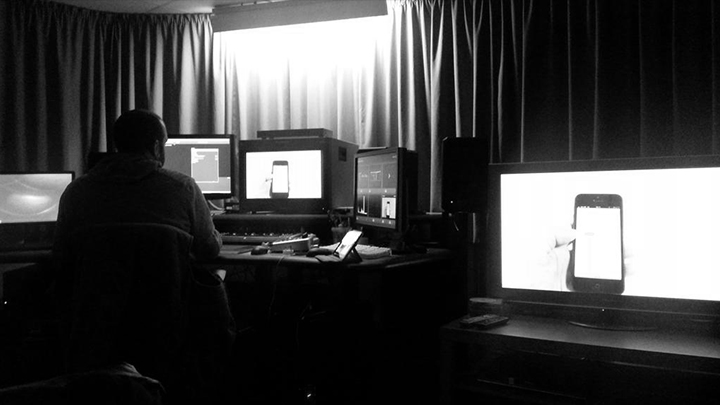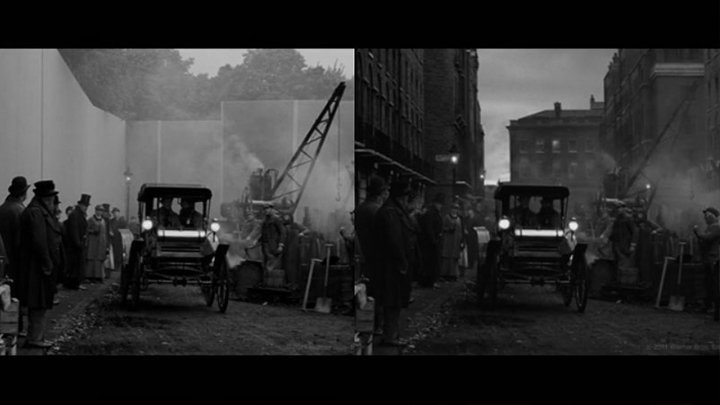Post Production for any sort of film or video project is a generally linear process, assuming you mostly did your job right in the pre-production and production phases (more information on those aspects in another post). As the term suggests, “Post” happens after the principal photography, filming / camera work is finished.
Broadly, it encompasses:
Editing, Sound Design, Visual Effects, Audio mixing, Color correction / Grading
That’s also (roughly) the order things happen, although there’s the occasional round tripping between steps.

Editing
Generally, the first step is to have an editor come in and organise the project file and footage in a clear and clean fashion. The footage is brought into the editing program; each clip’s metadata is manually entered (shot, take number, type of shot, notes on the action within the shot, etc.) Then the shots are cut up and placed into sequence in what is known as a rough cut or block edit.
While editing in this phase, it’s important to lay in as many sound effects and as much temp music as you can, because that stuff greatly affects the perceived pace and smoothness of the sequence.
Also, during this time, shots you wish you had or in most cases, shots you really need, become immediately obvious and a day or two of reshoots may be needed. Maybe the start of a scene needs changing off or maybe an extra line is needed to clarify something that doesn’t make sense – once the project is edited, these things become extremely obvious.
With the extra shots in place, a refined edit is produced and locked in so that work on audio and sounds design can begin.

Sound Design
When shooting there’s unlimited choice in terms of camera angles and how it is shot. When editing, work can only be done with what got recorded to the cameras. When editing sound, there is only a locked edit to go off of.
When editing the dialogue, editors may go back through other takes to find different line readings, or replace words that are overlapped by sounds that occurred on set. They’ll also make note of lines that need re-recording for whatever reason. That process is known as ADR. Ever seen a video with characters or people talking and something noisy such as heavy machinery is being operated in the background? Odds are the dialogue was rerecorded later in a studio with the people / actors watching themselves and trying to match what they were shouting at each other on set.
After the edit is locked in, the appropriate music is either found and bought from online portals that offer royalty free tracks at a premium, or less likely, is having a bespoke track made for that particular edit. The main constraint here is budget and for most business or web videos, creating a bespoke track would cost too much and take too long to produce that it would not even be considered.

Visual Effects
For the most part, Visual Effects encompasses everything from painting out cables, rig removal, digital replacing signage, blending two takes together, and generally anything that, if done properly, is completely invisible, yet very important. Only when the budgets get larger can more creative and more detailed visual effects be added.
The time it takes and the cost of the software to produce VFX can mean it is a non-starter for most people looking to have a video made, not to mention that detailed VFX are not necessary for most videos.

Audio Mixing
Once the sound has been edited, the dialogue intelligible and the music bed solid, it’s up to the sound designer to bring all these sound elements into harmony with each other. Sound mixing can get pretty complex. You might be doing a 7.1 theatrical mix (that’s seven speakers and a subwoofer), but in the main, business video or web videos will be mixed down for stereo.
Dynamic range, or the difference between the quietest parts and the loudest parts, is another issue when mixing audio. Theatrical mixes often have huge dynamic range because they can depend on a very controlled listening environment (i.e. a movie theatre). However, with mixes for TV adverts or online video the range has to be a lot less.
Once the sound is mixed, the sound part of a video is completely done.

Color Correction / Grading
To begin, colour correction involves matching the white balance and levels between shots, adjusting portions of the frame to be darker or lighter, and generally tweaking the image to make it look better.
Into the more interesting parts of colour correction…
Applying an appropriate colour grade to the video that has the potential to greatly influence how it is perceived. The look could be everything from the sickly green of The Matrix, to the bleach bypassed desaturated look of Saving Private Ryan.
At the highest level, a very expensive monitor is needed to properly judge the colour and the looks. However, without the worlds best monitor, the best course of action is to colour correct the video and then watch it on as many TVs and monitors as possible and then use that information to apply any further tweaks.
Once that’s done, you combine the final sound mix and the final colour correction / grade and the video is finished.
Hopefully this short introduction into how post production works when making a video has given you a small insight into the considerations and processes taken by a production company after the cameras have stopped rolling.
If you’d like to speak to us about producing content for you, contact us here: paul@motivproductions.co.uk / 01132444992




